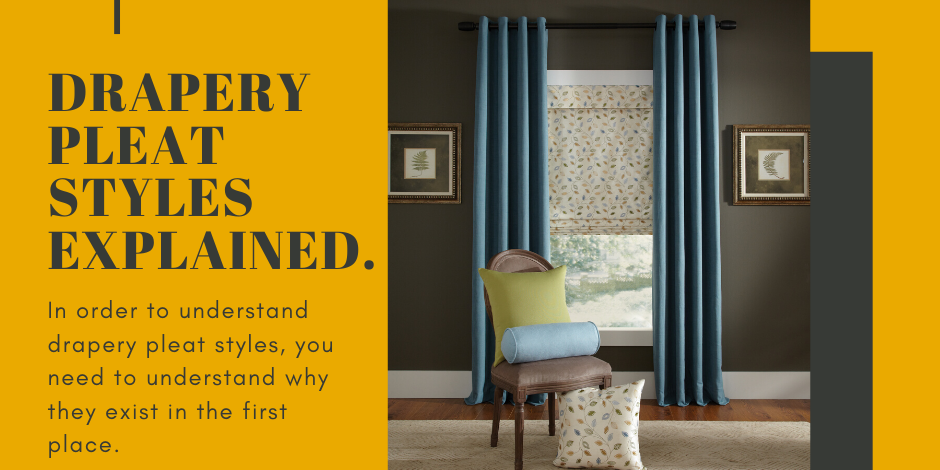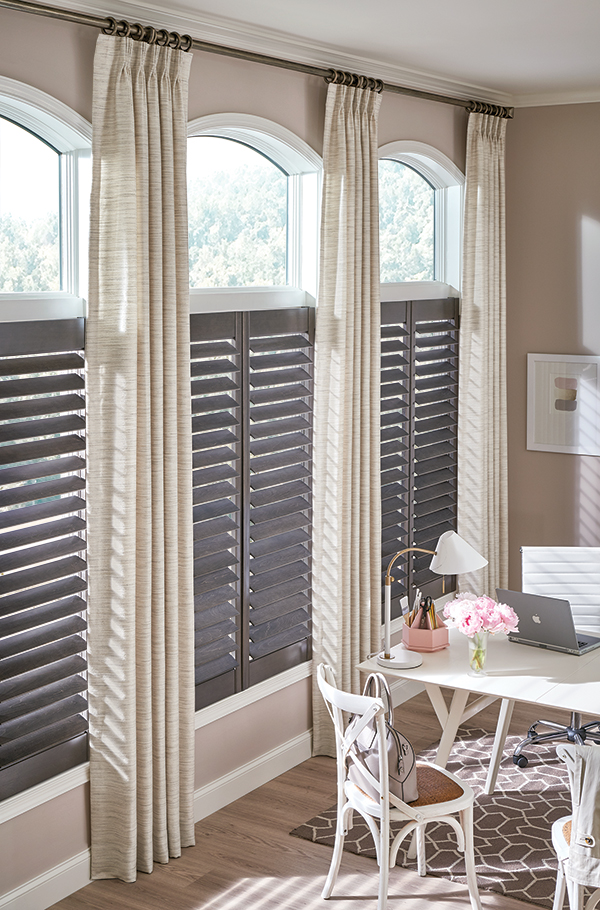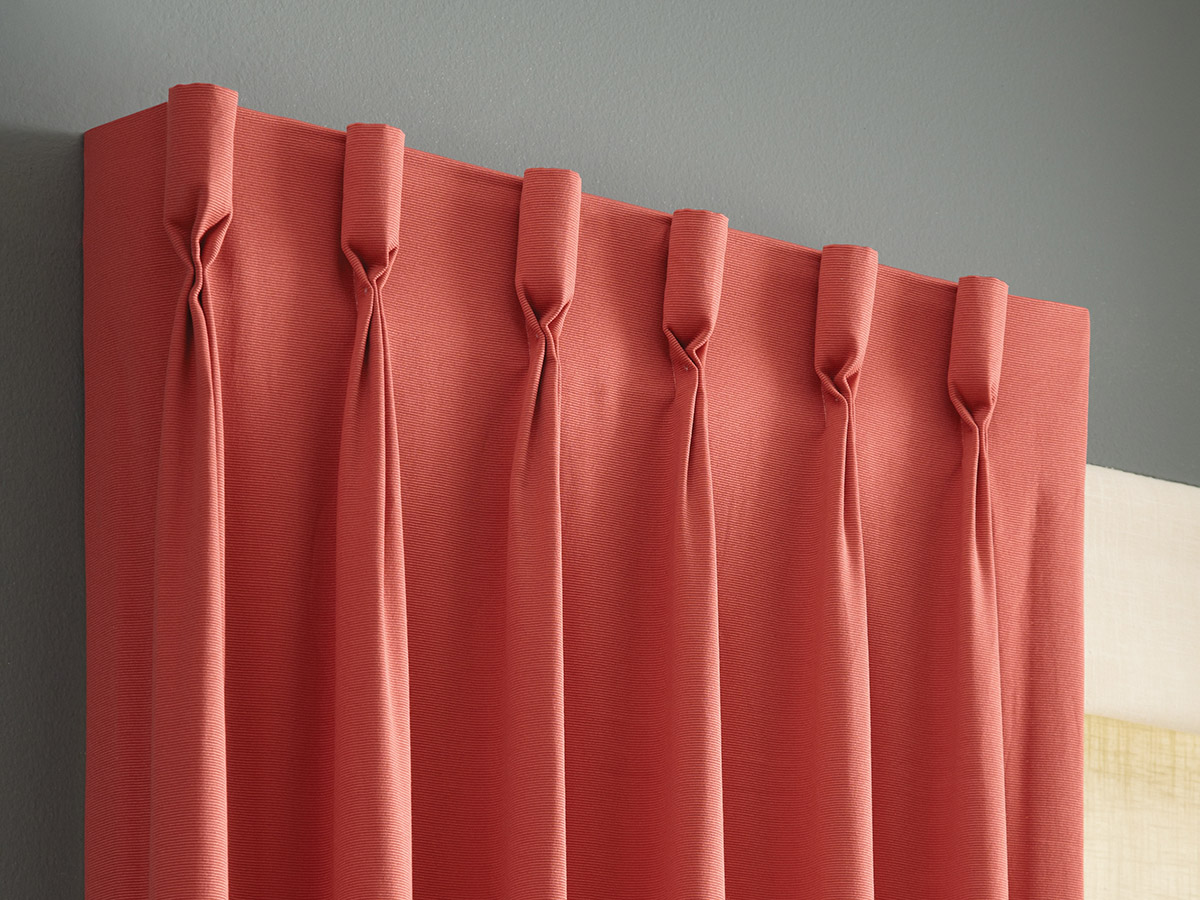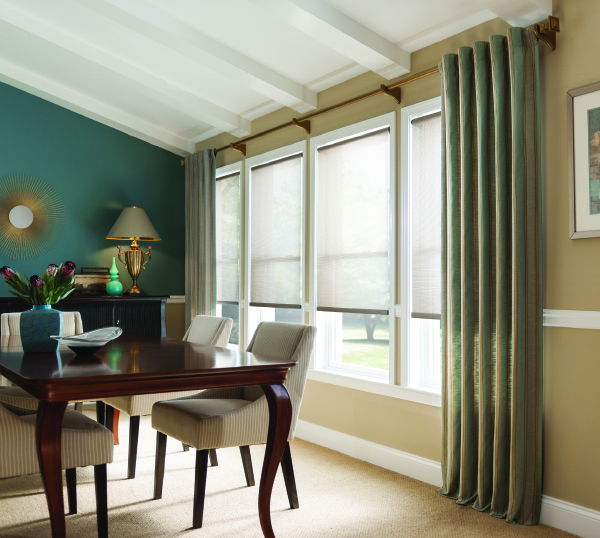When considering draperies, you’re probably thinking fabric first. But what about drapery pleat styles? It’s all in the pleats when it comes to fabric window coverings. They each offer a different aesthetic and more importantly, change the way your draperies… well, drape.
In order to understand drapery pleat styles, you need to understand why they exist in the first place. Their purpose is purely aesthetic; they create the illusion of fullness. Since the beginning in both home decor and fashion, the goal has been to achieve a look of opulence and luxury. In many cultures, pleats were traditionally reserved for royalty or ceremonial occasions. Pleats have been popular since ancient times- hence the vast amount of variations. Talk about timeless style!
Don’t let your drapes fall flat – compare and contrast the slew of pleat options that the world of draperies has to offer. Windows Dressed Up will help you choose a drapery pleat style that perfectly compliments your windows and the rest of your decor.
The Ten Drapery Pleat Styles: Explained
Below you’ll see all ten of the most popular drapery pleat styles. Each variation suits a different aesthetic, but we think all of them are pretty great. Think of it this way – if your windows had a closet full of fabulous pleated draperies, which outfit would they choose? Come shopping with us and we’ll help you dress up your windows.
1. Two-Finger Pinch Pleat
The Two-Finger Pinch Pleat style provides even spacing to control the fullness of the drape. This style uses a stable woven stiffener to allow uniquely gathered pleats to form and retain their shape. Two pleats are sewn together at the bottom of the pleat as well. This option has a couple of nicknames; it’s often called the Two-Point Pinch Pleat or the Double French Pleat.
2. Three-Finger Pinch Pleat
The Three-Finger Pinch Pleat drape combines the look of a super sleek header with the functionality of controlled fullness. This is a riff on the Two-Finger Pinch Pleat; the difference being that the pleats are more visible in this option. You can also find this style under the names of Three-Point Pinch Pleat and Triple French Pleat.
3. Two-Finger Euro Pleat
The Two-Finger Euro Pleat style sports expert spacing and a maintained fullness. With help from the fixed woven stiffener, the draped fabric forms beautifully gathered pleats that are sewn together at the top of the fabric header. This option is quite similar to the Two-Finger French Pleat. In fact, instead of the pleat being sewn at the bottom of the drapery header, the pleats are sewn at the very top. This style is also known as European Pleating, Double-Tailored Pleating, or Top Tack Two-Finger Pleating.
4. Three-Finger Euro Pleat
The Three-Finger Euro Pleat uses a sophisticated gathering technique to create a sleek design. Three pleats are sewn together at the top of the woven stiffener to create a lush fullness. This style is similar to the Three-Finger Pinch Pleat, except the gathering is sewn, not “pinched.” Other names include European Pleats, Triple Tailored Pleats, and Top Tack Three-Finger Pleats.
5. Inverted Box Pleat
The Inverted Box Pleat is a sharp style in which the fabric is expertly folded to create a clean flow down the length of the drape. The fingers of this pleat are inverted, meaning that the gathering is shown in the back of the drape, making for a nice and smooth front. This style can also be called an Inverted Pleat, Reverse Pleat or similar to the Goblet Pleat.
6. Goblet Pleat
The Goblet Pleat Style features a padded top edge that mimics a wine glass or tapered stemware, hence the name. To achieve this, a cone of fabric is formed and then set with a fixed woven backing to keep its shape. This Flemish style is a dramatic look that will add interest to your windows instantly.
7. Back Tab
The Back Tab Pleat style softly sculpts the fabric of the drapes through a tight gathering at the header. In the back of the treatment, fabric tabs are fixed in place with woven stiffeners. The curtain rod slides through these openings, allowing for a neat and seamless look against your windows. This style can also be called a Tack Roll Pleat or a Cartridge Pleat.
8. Ripplefold Drapery Pleat
The Ripplefold Drapery Pleat gets its name from the ripple effect it creates in its textile. The result is a series of soft and simple waves that zig-zag to create the same look on the frontside and backside. The folds of this style will stay in place when you slide them open and closed. Be sure that ripplefold tape is attached to match the drapery tracks. It’s essential for this type of drapery to use a special ripplefold tape and track. This is what will ensure proper function for your draperies.
9. Rod Pocket
Rod Pocket Curtains are a traditional take on drapes. In this style, a pocket is sewn into the header of the drape to conveniently fit your curtain rod. If you’re using a single-center support rod bracket, make sure you install it where the panels meet. This look lets the textile shine; you won’t see much stitching or hardware at all with this design.
10. Grommet Top
We’ll end this list on the most recognized style of them all – the Grommet Top. This option is increasing in popularity because it leans more towards a contemporary look than it’s other pleat peers. This option also exhibits a streamlined heading that is much less bulky than the others. It also happens to be very easy to install!
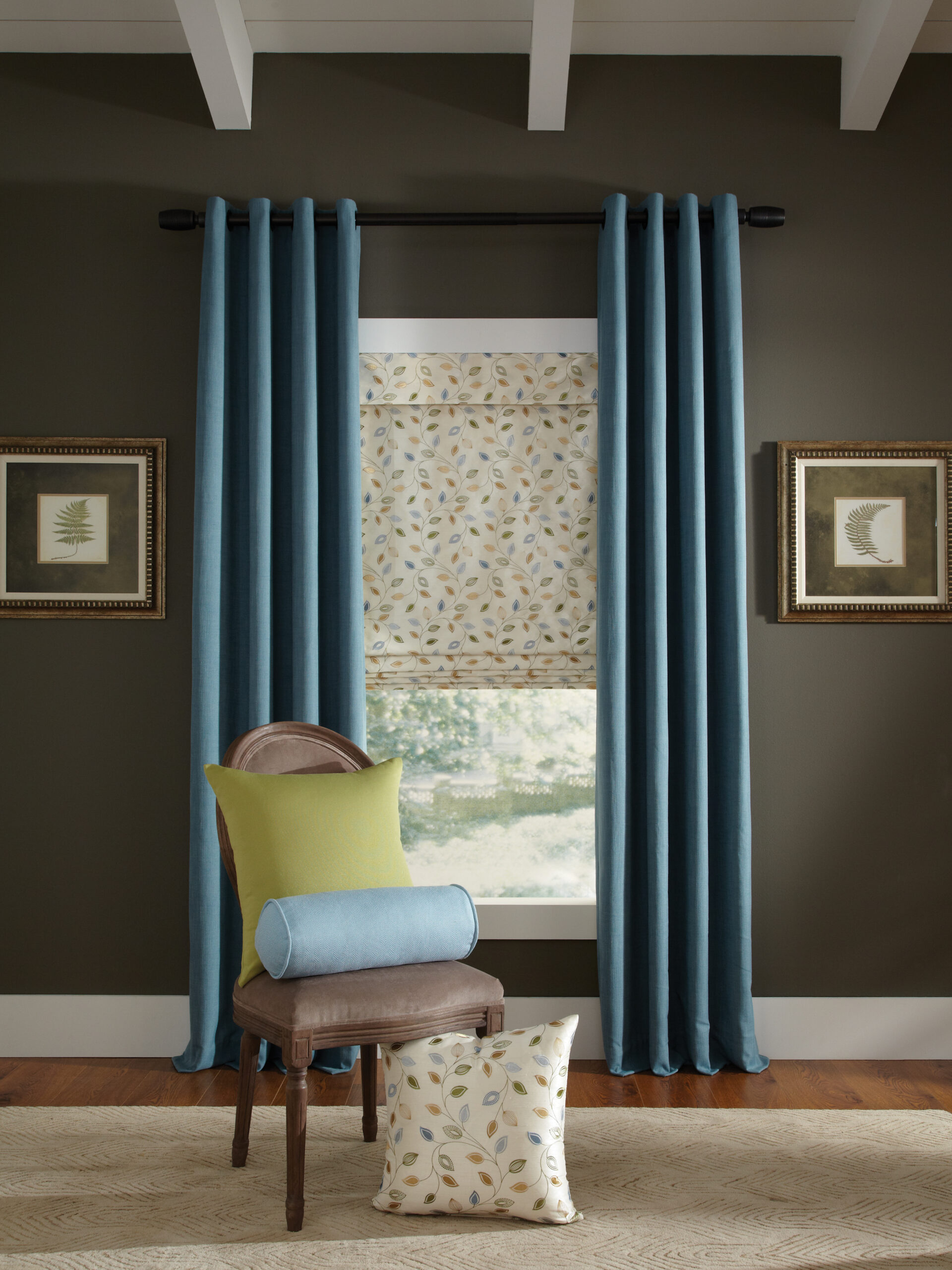
Choose the Right Pleat to Make Your Windows Complete
How your curtain rolls is through the way it folds. Now that you know about all the different kinds of pleats out there, you can understand why all curtains are not created equal. From the gothic style of the Goblet Pleat to the modern look of the Ripplefold, you can dramatically change the look of your home with this one seemingly minor detail.
Curtains with a ho-hum pleat equals sad, drab drapes. Let the experts at Windows Dressed Up give your draperies a make-over! We’ll dress your windows in a winning look. 😉
Book your FREE virtual or in-studio appointment today!

